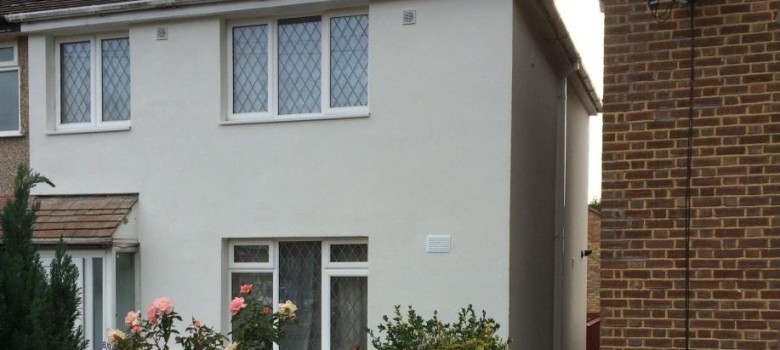
Does my property have solid walls?
If your house was built prior to the 1930s, the chances are that it has solid walls (simply a solid layer of masonry bricks). According to research, twice as much heat could be lost through an uninsulated solid wall as through an un-insulated cavity wall. Insulating your walls is a great method of making your home more energy efficient. The insulation will minimise heat loss in the winter, saving you money on your heating bills and preventing your home getting too warm in the summer.
What is external solid wall insulation?
External wall insulation is a system of insulating material and render attached to the external walls of a property.
Are there different types of external wall insulation?
Yes – there are several systems. For instance EWI Pro, which has a range of different insulating materials and renders. It is a highly customisable system which allows you to choose materials depending on budget, look and environment.
Can I do it myself?
No- you need to employ a professional!
What are the advantages of external solid wall insulation?
- Decreases heat transfer and lowers energy bills
- Minimal disruption to the household, as work is carried out outside
- Renews the appearance of your home and increases the lifespan of brickwork
- An opportunity to fill cracks and holes in the brickwork, which can help reduce draught problems (see Draught Proofing for more information)
- The insulation will take the u-value of your walls down to just 0.3w/m2k which is equivalent to a brand new cavity wall built today – therefore your heating bills will be significantly lower.
- Solid wall insulation stops penetrating damp
- It can also really help reduce noise entering the home, so if you live on a busy road it might be just the thing
- Since the walls get warm, they act as a heat store so rooms will take longer to cool down.
What are the disadvantages of external solid wall insulation?
- More expensive than internal wall insulation
How is internal insulation installed?
The property must be prepared carefully and all the relevant tests carried out before work can begin. Firstly, if the property has existing render, a render test must be carried out to see if it is strong enough to hold the insulation. If not, all the existing render will need to be removed prior to attaching the insulation to the brickwork. If the render test shows the that existing render is firmly held in place, the render can be simply smoothed ready for the insulation to be applied directly on to it.
Another important step prior to installing any external wall insulation is to remove any pipework from the outside of the building. These will be reinstalled at the end of the process (and maybe extended in some instances as necessary); this is one of main reasons that the insulating process is expensive and time consuming.
The installation process is relatively complex, but the basic steps are outlined below:
- Apply insulating panels to the wall using adhesive mortar
- Plastic capped fixings are driven through the insulating panels and around their perimeter into the wall to tie the panels securely to the wall
- Mortar is then applied over the insulating panels and the fixings.
- An insulating mesh is then sunk into the mortar to hold the panels rock hard in position.
- The mortar is sanded and painted with primer to prepare it for the render
- The rendered finish is applied (available in any colour!)
What does external wall insulation look like?
The most cost-effective way of insulating your solid walls is to finish it with a simple white render. However there is a huge variety of finishes possible; smooth, textured or painted, tiled, panelled, pebble-dashed or finished with brick slips.
What should I bear in mind when having external wall insulation installed?
You’ll need to consider local building regulation. This is because this process involves covering the original brickwork and could significantly alter the current appearance of the property, out of step with the local area. According to the planning portal, planning permission is not normally needed to install solid wall insulation provided the external appearance of the property doesn’t change. However, if the building is listed or is in a conservation area you should consult your local planning authority. In addition if the works are likely to change the appearance of your home (e.g. from brick to render) then we suggest speaking to the local planning authority too. From our experience of installing solid wall insulation across London, it seems there is no standard approach to how the councils judge what is acceptable and what isn’t, so if in doubt it is probably worth asking!
How much does external wall insulation cost?
The cost of solid wall insulation is roughly £100/m2, so it is not cheap, but it could be really worthwhile!
Are there any grants available?
There are no national grants available at the moment, but check with your local council.
Installing solid wall insulation
Interested in getting solid wall installation? We have scoured the country for the best tradespeople, so that we can make sure we only recommend those we really trust.
If you would like us to find you a local installer, just fill in the form below and we will be in touch shortly!
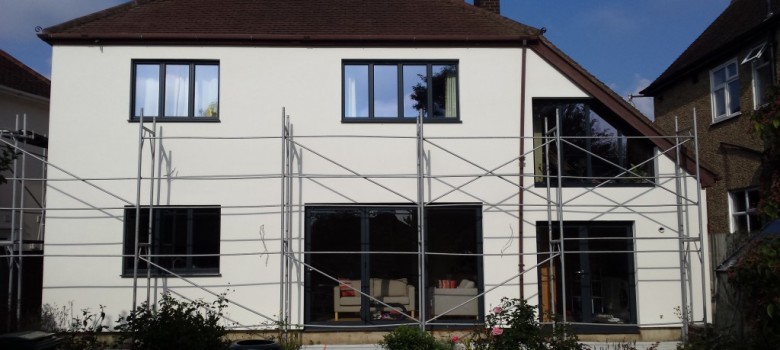




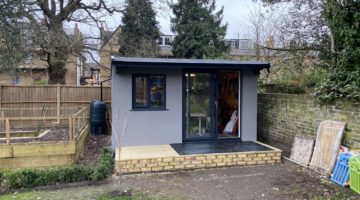
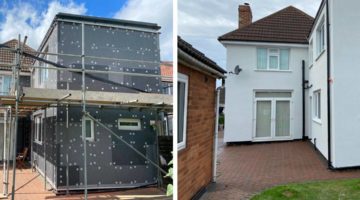
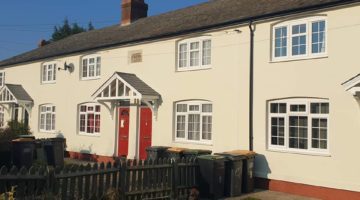





Can i install this on masonry cavity walls?
Wondering if you can help? My wife and I moved into our property last year and so far we went through a whole winter. It wasnt the warmest place and we are now exploring external wall insulation. I spoke to Baumit and EWI Pro Insualation Systems and have to say that both support teams were terrific. Baumit couldn’t recommend a local installer but EWI Pro Insualation have. Can anyone help recommend a local installer near Norwich? Much appreciated.